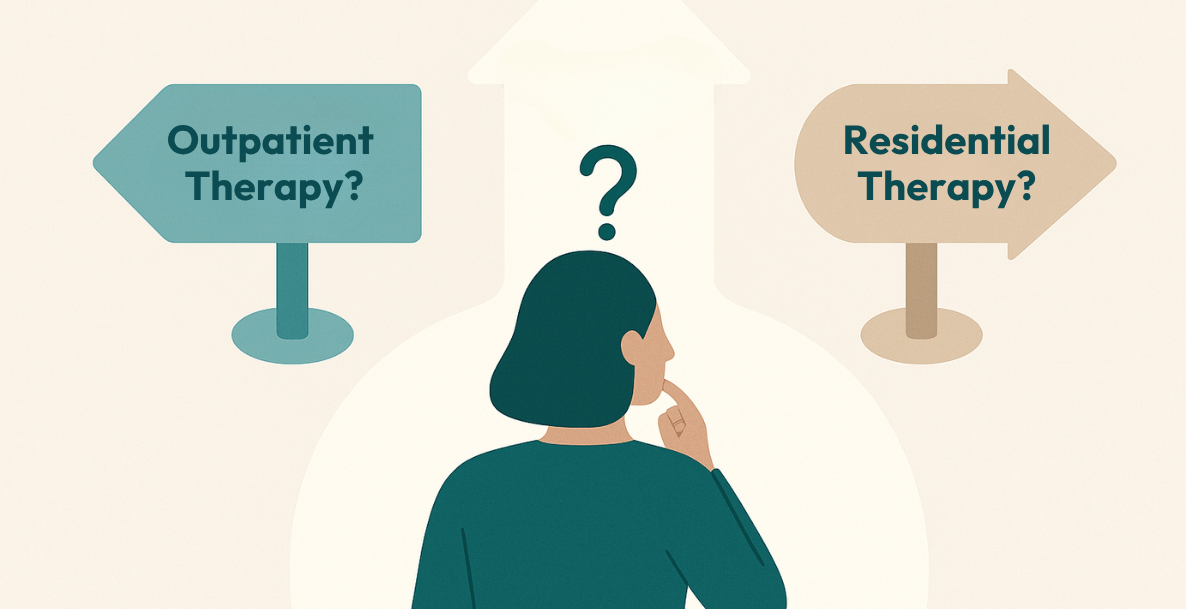Misophonia is a neurological condition. If you suffer from misophonia, it means that you are emotionally or physiologically triggered by certain sounds.
‘Miso’ is derived from the Greek word for ‘hatred’, and ‘phonia’ means ‘of sound’. For a person suffering from misophonia, certain sounds can activate arousal in the nervous system, making them feel angry, annoyed, or as though they must escape. Misophonia is also sometimes known as Selective Sound Sensitivity Syndrome.
Is Misophonia Real?
Some people do not believe that misophonia is a real condition. It does not feature in the DSM-V, a widely used text among clinicians for diagnosing mental illness and disorders. However, just because misophonia is not found in the DSM does not mean that it is not a real condition. It is a relatively new area of study, with the term itself being coined as recently as 2001 by audiologists Pawel and Margaret Jastreboff.
Living with misophonia can be difficult because the trigger sounds can seem perfectly normal to other people. A group of people could hear the same sound and be unbothered, while one person in the group is deeply affected. The emotional or physiological response from the misophonic person can seem strange and unreasonable to those who don’t understand the condition.

Download the Brochure
Discover Our Innovative Trauma Recovery Pathway
Triggers
There are many potential aural triggers for the misophonic. New trigger sounds can develop over time. It is believed that these triggers have their onset in childhood or early adolescence.[1] Some of the common trigger sounds reported by people suffering include:
- Chewing
- Slurping
- Swallowing
- Throat clearing
- Lip-smacking
- Sneezing
- Sniffling
- Pen scratching paper
- Paper
- Ticking
- Doors slamming
- Car horns
Symptoms
Misophonia can range from mild to severe. Depending on its severity, it can cause a person to have to leave a social setting, or it can cause a full-blown panic attack. The condition can make those suffering feel lonely and isolated, as many people are not even aware of it.
If you suffer from misophonia, you may experience some or all of the following symptoms when your misophonia is triggered.
- Anxiety
- Deep discomfort
- An urge to escape
- Disgust
- Anger
- Irritability
On the more severe end of the misophonic spectrum, symptoms can include:
- Hatred
- Rage
- Fear
- Distress
- Panic
- Emotional overwhelm
This is a condition that can disrupt many areas of your life. Before a person is even triggered, there is sometimes the anticipation of triggers. The anticipation alone can cause an adverse reaction. If, for example, a misophonic person is invited to a restaurant with friends, they might decline the invite out of fear that they will be triggered. There is a tendency among people with misophonia – especially among those with severe misophonia – to avoid such social situations altogether.
A major challenge in dealing with misophonia is a lack of awareness of the condition. Many of us are familiar with depression and anxiety. While these conditions can be unbearably difficult, there is a general awareness around them. Those suffering are often met with some general understanding from others if they open up about their condition. Misophonia, on the other hand, is not as well-known. This can make it difficult for the person suffering to feel seen and understood.
Characteristics
According to research published in Frontiers in Psychology, misophonia usually begins in childhood or early adolescence.[2] At this stage of life it can negatively impact an individual’s academic performance[3], as is reported in Frontiers in Human Neuroscience.
A sound that is normal to others can be a source of great distress for the misophonic. As mentioned above, several emotional responses are often seen in triggered misophonics. However, there are also significant physiological responses associated with the condition. Some sufferers report increased physical tension, a clenched jaw, increased heart rate, and a feeling of pressure building up in the chest, paired with an urge to attempt the person making the sound to stop what they are doing.[4]
The person suffering can never be fully sure about whether or not they will hear a trigger sound. This can lead to social withdrawal and isolation in an attempt to ensure that they are not triggered. As the sounds that trigger the condition are relatively common, the person suffering is likely in a perpetual state of anticipatory anxiety. This can be exhausting. As a result, misophonia can lead to a reduced overall quality of life.[5]
Explore Our Treatment Options
Find Out What Makes Us Different
The staff at our globally recognised mental health clinic have been informed, trained and supervised by some of the world’s leading trauma experts such as Dr Bessel van der Kolk, Dr Janina Fisher, Dr Stephen Porges, Dr Dick Schwartz and more.
Misophonia and The Brain
Misophinia was once generalised as a type of anxiety disorder. Recent research shows that the neurological mechanisms that underlie this condition are different from those associated with other types of anxiety.
In a report published in Current Biology, neuroscientists highlight that when trigger sounds affect a person suffering, the Anterior Insular Cortex (AIC) – the part of the brain responsible for processing emotions – goes into overdrive.[6]
According to the study, ‘trigger sounds in misophonics were associated with abnormal functional connectivity between AIC and a network of regions responsible for the processing and regulation of emotions, including the ventromedial prefrontal cortex (vmPFC), posteromedial cortex (PMC), hippocampus, and amygdala.’[7]
Misophonia and Trauma
Research published in Frontiers in Behavioural Neuroscience suggests that most of those suffering do not suffer from abnormal hearing sensitivity[8], as is the case in hyperacusis (increased sensitivity to volume and frequency of sound). Still, in people with misophonia, research has observed that the limbic system and the ANS are in a heightened excitatory state, which causes them to experience an abnormal reaction to normal aural stimuli.[9]
According to the Misophonia Institute, the condition occurs more frequently in people who suffer from anxiety, stress, or tendencies towards compulsive behaviour.[10] It often develops in childhood in response to sounds made by a parent or other family member. The sound itself causes distress and strengthens as a trigger when it affects a person already struggling with stress tolerance. It begins at home in the family, but can progress, permeating into a person’s life outside of the family setting.
Trauma is known to reduce our distress tolerance and cause greater activation and dysregulation in the autonomic nervous system (ANS). If our emotional regulation and ANS health are compromised by trauma, we are more likely to develop misophonia.
Treatment
Misophonia is a relatively new area of study. Still, treatment approaches such as Tinnitus Retraining Therapy (TRT), cognitive behavioural therapy (CBT), and counselling have been effective in reducing the severity of misophonia in clients.[11] TRT works by increasing a client’s ability to tolerate sounds. CBT addresses the thoughts, feelings, and behaviours that clients experience in relation to the trigger sound. Counselling helps clients by offering a compassionate relationship with an attuned therapist who can hold a safe space as the client explores their distressing thoughts, memories, and emotions.
If you have a client, or know of someone who is struggling to heal from psychological trauma, reach out to us at Khiron Clinics. We believe that we can improve therapeutic outcomes and avoid misdiagnosis by providing an effective residential program and out-patient therapies addressing underlying psychological trauma. Allow us to help you find the path to realistic, long-lasting recovery. For information, call us today. UK: 020 3811 2575 (24 hours). USA: (866) 801 6184 (24 hours).
Sources
[1] Palumbo, Devon B et al. “Misophonia and Potential Underlying Mechanisms: A Perspective.” Frontiers in psychology vol. 9 953. 29 Jun. 2018, doi:10.3389/fpsyg.2018.00953
[2] Palumbo, Devon B et al. “Misophonia and Potential Underlying Mechanisms: A Perspective.” Frontiers in psychology vol. 9 953. 29 Jun. 2018, doi:10.3389/fpsyg.2018.00953
[3] Edelstein, Miren et al. “Misophonia: physiological investigations and case descriptions.” Frontiers in human neuroscience vol. 7 296. 25 Jun. 2013, doi:10.3389/fnhum.2013.00296
[4] Møller A.R. (2011) Misophonia, Phonophobia, and “Exploding Head” Syndrome. In: Møller A.R., Langguth B., De Ridder D., Kleinjung T. (eds) Textbook of Tinnitus. Springer, New York, NY. https://doi.org/10.1007/978-1-60761-145-5_4
[5]Edelstein, Miren et al. “Misophonia: physiological investigations and case descriptions.” Frontiers in human neuroscience vol. 7 296. 25 Jun. 2013, doi:10.3389/fnhum.2013.00296
[6] Kumar, Sukhbinder et al. “The Brain Basis For Misophonia”. Current Biology, vol 27, no. 4, 2017, pp. 527-533. Elsevier BV, doi:10.1016/j.cub.2016.12.048. Accessed 29 Dec 2020.
[7] Kumar, Sukhbinder et al. “The Brain Basis For Misophonia”. Current Biology, vol 27, no. 4, 2017, pp. 527-533. Elsevier BV, doi:10.1016/j.cub.2016.12.048. Accessed 29 Dec 2020.
[8] Schroder, Arjan et al. “Diminished N1 Auditory Evoked Potentials To Oddball Stimuli In Misophonia Patients”. Frontiers In Behavioral Neuroscience, vol 8, 2014. Frontiers Media SA, doi:10.3389/fnbeh.2014.00123. Accessed 29 Dec 2020.
[9] Møller A.R. (2011) Misophonia, Phonophobia, and “Exploding Head” Syndrome. In: Møller A.R., Langguth B., De Ridder D., Kleinjung T. (eds) Textbook of Tinnitus. Springer, New York, NY. https://doi.org/10.1007/978-1-60761-145-5_4
[10] “What Is Misophonia? | Definition, Causes & Treatment | Misophonia Institute”. Misophonia Institute, https://misophoniainstitute.org/what-is-misophonia/. Accessed 29 Dec 2020.
[11] Palumbo, Devon B et al. “Misophonia and Potential Underlying Mechanisms: A Perspective.” Frontiers in psychology vol. 9 953. 29 Jun. 2018, doi:10.3389/fpsyg.2018.00953






